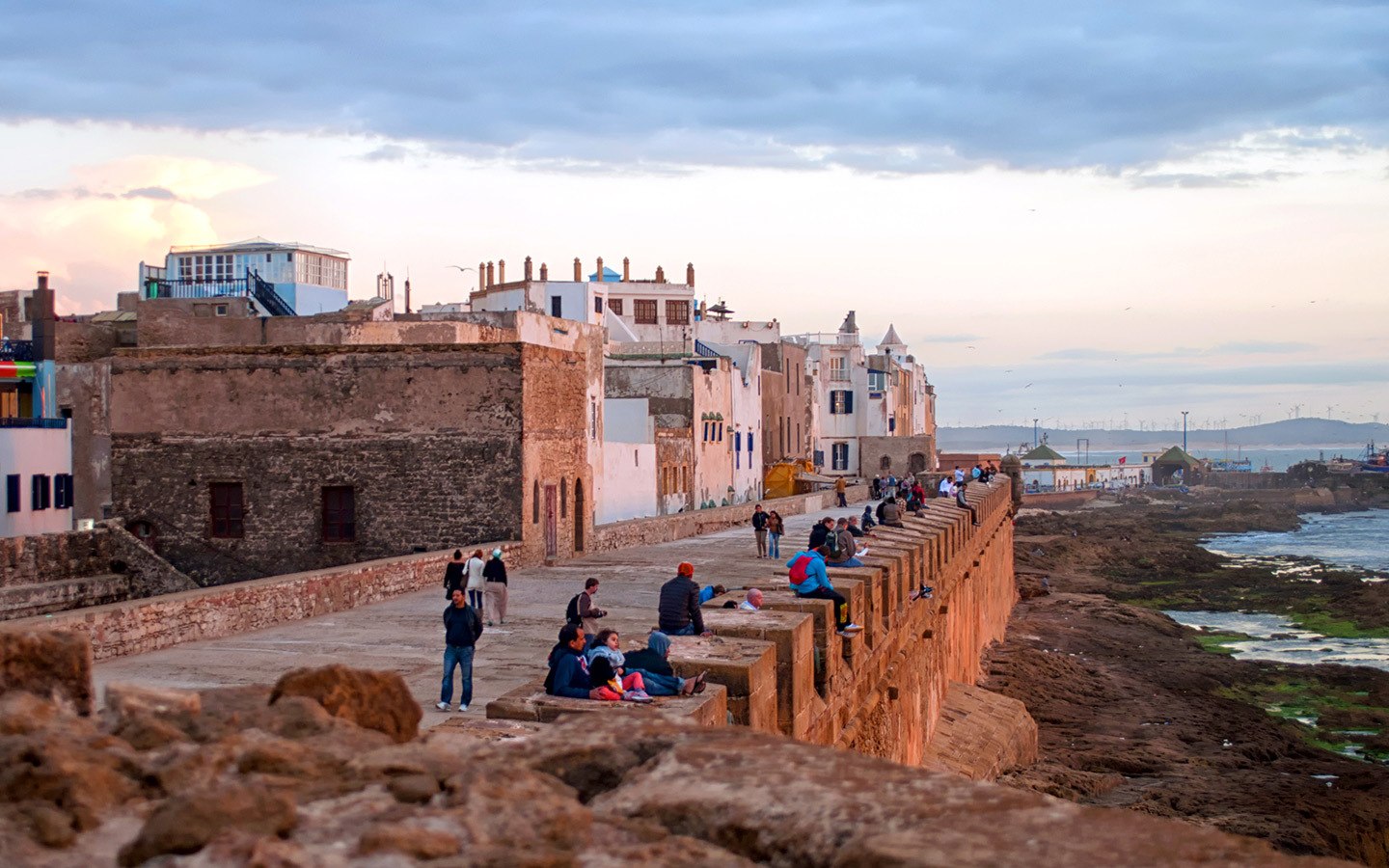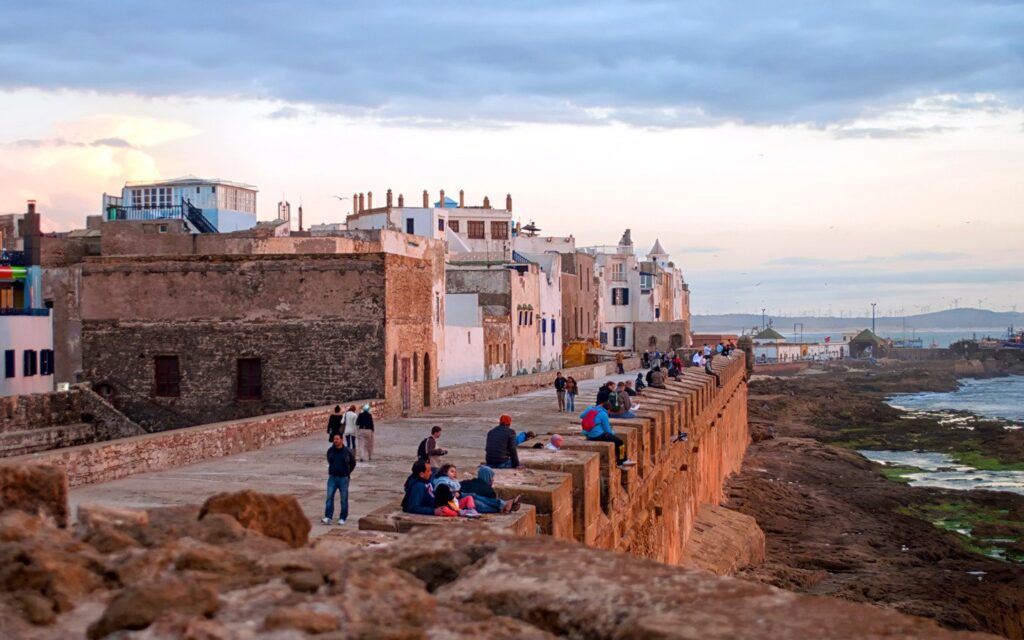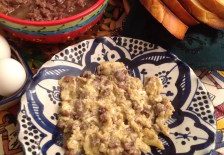The Aura of Portugal Hovers Over Morocco’s Atlantic Coast
By: Habeeb Salloum/Arab America Contributing Writer

From Marrakesh known as ‘pearl of Morocco’s south’, three of us along with Abdelatif as our guide travelled to Essaouira, once the Portuguese stronghold of Magador on the country’s Atlantic coast.
As we toured that picture postcard city, thoughts of Portuguese knights storming the Moroccan coast, then eventually being forced to flee, filled my mind. All around us were evidence of these warring years.
Essaouira is located on a rocky tongue of land. The Portuguese built it in the 16th century on the site of a Phoenician merchant fortress that was later turned into a Roman trading post. The Portuguese surrounded it by massive walls and two large fortresses, making it almost impregnable to attack. The Moroccans tried a number of times to evict them but failed until the powerful Sultan Sidi Mohammed Ben Abdallah captured the city in the 18th century.
With the exception of two fortresses, Kasba Scala and Port Scala, and the ramparts, he razed the town to the ground to erase the memory of the Portuguese aggressors. On its ruins, and according to plans drawn up by the captive French engineer, Theodore Cornut, he built a new town and called it Essaouira.
Today, Essaouria is, above all, a town of artists, called by its fans ‘an eternal cradle of art’. Not only Moroccans but also foreign artists can be seen at work throughout the city. Per square foot, it has more paintings on exhibition and for sale than any other place that I have visited – and I have visited at least a hundred countries during the past dozen years.

We made our way to the carpenters’ quarters below Kasba Scala. In tiny, vaulted caverns beneath and edging the bastion, skilled woodworking craftsmen were toiling in their semi-dark shops. Some were polishing the hard thuya, a type of oak found around Essaouira, to a glossy finish. Others would then inlay it with ebony, cedar, lemonwood, mother-of-pearl, and silver in floral and geometric patterns. Leaving the craftsmen at work we retired to our hotel for the night to Hotel des Iles, the best abode in town.
Early next morning, refreshed, we were on our way, driving northward through a tree-covered landscape which soon led to barren hills, sloping down to a rough shoreline battered by huge Atlantic waves. It was virtually an empty countryside with here and there, a farmhouse, a tiny village, or a rich agriculture valley. A short time after driving by the resort of Soura Kédima, we passed a huge grain silo, then entered the industrial town of Safi.
For a brief period, 1508 to 1541, the Portuguese occupied the city. In this short span of time, they built the distinctive Dar el Bahr (Sea Castle) and circled the town with ramparts. These Portuguese walls still surround the old town that for centuries has been a rich fishing port.
The present-day city has spread far beyond the Portuguese walls and is surrounded by potash sardine canning plants – Morocco is the world’s largest exporter of sardines. The country is also the number one exporter of potash in the world and much of this export is through the port of Safi. However, for centuries the chief industry in the city was the manufacture of pottery. Today, the production of all types of pottery continues. A whole quarter outside the old city walls is devoted to pottery workshops.
We toured the Old Portuguese town then drove northward through a semi-barren landscape dotted here and there with small plots of cultivated land. As we travelled further on, every once in a while, we would pass splendid summer vacation homes and villas built, atop the cliffs edging the sea, by the wealthy from Marrakech. Between these vacation homes and below along the seashore were numerous hot houses supplying Marrakech and the other large cities with much of their vegetables.

The countryside became much more fertile when the summer resort town of Oualidia came into view. The inviting beaches below our highway, running atop the cliffs, were virtually empty. Bordering these sands, awaiting development, were cultivated plots of land and man-built fields of salt water that the sun would eventually evaporate, after which the salt would be collected and refined.
As we drove, the land gradually became more fertile and the villages began to multiply, just before we neared El Jadida. Past an oil-run electric plant, followed by phosphate plants, we entered the shipping port town. It appeared to be a prosperous city. New buildings were sprouting up everywhere, spreading out from the walls of the Old Portuguese town.
In the 16th century, the Portuguese finding that this Moroccan coastal spot was one of the most protected harbour sites on the entire Atlantic coast of the country, built here their fortress-town. They stayed from 1506 to 1769 when the Sultan Sidi Mohammed Ben Abdallah ousted them.
As we toured the stylish and attractive still-standing Portuguese town with its imposing church and synagogue, hugged by the medieval ramparts, we were amazed at how much of the ancient town remains, especially the well-preserved Portuguese Cistern – now a museum piece.
Driving northward for a few minutes, we came to the Azemmour – another of the Portuguese fortress-ports. Even though they stayed here only from 1513 to 1541, they surrounded the town with imposing ramparts. Unlike the other Portuguese coastal fortresses, Azemmour has remained a backwater town, not expanding much beyond its walls.
From Azemmour, summer villas and rich farmlands, overflowing with grain and vegetable fields kept us company until, 340 km (211 mi) after leaving Essaouira, we entered metropolis of Casablanca which at one time was the Portuguese fortress of Casa Branca (white house) – the last stop in our search for Portuguese coastal remains. There were more to the north, but we had explored some of the most important of these fortress-cities and we were satisfied.
Once these citadel-colonies were steppingstones from which the Portuguese planned to Christianize North Africa. However, as over the centuries, their hopes faded into oblivion, they became trading towns. Today, they are historic relics waiting for travellers, like us, or historians to explore.


